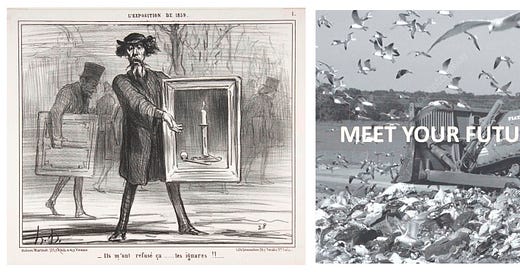Selling art on speculation is a game of chance, while the serious artist will insist that art-making is a labor of love and a noble pursuit. True works of art are more than just salable products, or so their makers claim, while they fight tooth and nail for critical acclaim, peer approval, and income from gallery, auction, and online sales. Only a few have a business plan. Let’s take a look at what one might look like.
An artist might finish one artwork each month. Let’s say for the sake of argument that fifteen are produced in a year. An art dealer might select twenty pieces for a solo show, leaving the artist with ten to spare. The artist regards these as equal in merit to those selected by the dealer. Fifteen pieces sell while the show is up. Three more find buyers in the months that follow. Six months later, two unsold works are returned to the artist. Almost half of two years’ output goes into storage. These will never again be exhibited at a gallery that had already declined to showed them, or was unable to sell them. This begs a question. Why are artworks refused by galleries, or unsold after gallery shows, not considered burned—like lots passed at auction. The short answer is that they are. Here’s why. . .
Keep reading with a 7-day free trial
Subscribe to TRUE PLACES to keep reading this post and get 7 days of free access to the full post archives.




